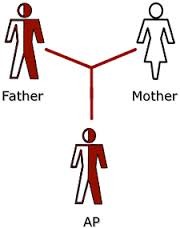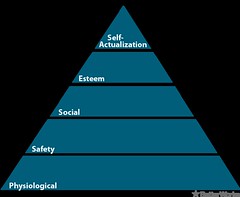| 9282235770 | Personality | An individual's characteristic pattern of thinking, feeling, and acting. Example: Type A and Type B personality Approach: Psychodynamic |  | 0 |
| 9282235771 | Free Association | In psychoanalysis, a method of exploring the unconscious in which the person relaxes and says whatever comes to mind, no matter how trivial or embarrassing. Example: I'll say a word and you have to say the first word that comes to mind. Approach: Psychodynamic |  | 1 |
| 9282235772 | Psychoanalysis | Freud's theory of personality that attributes thoughts and actions to unconscious motives and conflicts; the techniques used in treating psychological disorders by seeking to expose and interpret unconscious tensions. Example: Id, ego, superego Approach: Psychodynamic |  | 2 |
| 9282235773 | Unconscious | According to Freud, a reservoir of mostly unacceptable thoughts, wishes, feelings, and memories. According to contemporary psychologists, information processing of which we are unaware. Example: Psychoanalysis Approach: Psychodynamic |  | 3 |
| 9282235774 | Id | Contains a reservoir of unconscious psychic energy that, according to Freud, strives to satisfy basic sexual and aggressive drives. The id operates on the pleasure principle, demanding immediate gratification. Example: Immediate desires Approach: Psychodynamic |  | 4 |
| 9282235775 | Ego | The largely conscious, "executive" part of personality that, according to Freud, mediates among the demands of the id, superego, and reality. The ego operates on the reality principle, satisfying the id's desires in ways that will realistically bring pleasure rather than pain. Example: Conscious brain, reality Approach: Psychodynamic |  | 5 |
| 9282235776 | Superego | The part of the personality in Freud's theory that is responsible for making moral choices. Example: Idealism Approach: Psychodynamic |  | 6 |
| 9282235777 | Psychosexual Stages | The childhood stages of development (oral, anal, phallic, latency, genital) during which, according to Freud, the id's pleasure-seeking energies focus on distinct erogenous zones. Example: Oral, anal, phallic, latency, genital Approach: Evolutionary |  | 7 |
| 9282235778 | Oedipus Complex | According to Freud, a boy's sexual desires toward his mother and feelings of jealousy and hatred for the rival father. example: Mother complex Approach: Evolutionary |  | 8 |
| 9282235779 | Identification | The process by which, according to Freud, children incorporate their parents' values into their developing superegos. example: Boy/girl tries to be like father/mother Approach: Sociocultural |  | 9 |
| 9282235780 | Fixation | According to Freud, a lingering focus of pleasure-seeking energies at an earlier psycho sexual stage, in which conflicts were unresolved. Example: Unmovable, doesn't mature. Approach: Psyodynamic |  | 10 |
| 9282235781 | Defense Mechanism | In psychoanalytic theory, the ego's protective methods of reducing anxiety by unconsciously distorting reality. Example: Denies reality Approach: Humanistic | 11 | |
| 9282235782 | Repression | In psychoanalytic theory, the basic defense mechanism that banishes from consciousness anxiety-arousing thoughts, feelings, and memories. Example: Forgetting about a test even if you have known about it for months. Approach: Evolutionary |  | 12 |
| 9282235783 | Regression | Psychoanalytic defense mechanism in which an individual faced with anxiety retreats to a more infantile psycho sexual stage, where some psychic energy remains fixated. Example: Sleeping with your teddy bear when you feel home sick. Approach: Evolutionary |  | 13 |
| 9282235784 | Reaction Formation | Psychoanalytic defense mechanism by which the ego unconsciously switches unacceptable impulses into their opposites. Thus, people may express feelings that are the opposite of their anxiety-arousing unconscious feelings. Example: Denying that you like someone while being beat red. Approach: Evolutionary |  | 14 |
| 9282235785 | Projection | Psychoanalytic defense mechanism by which people disguise their own threatening impulses by attributing them to others. Example: Hypocrites Approach: Evolutionary |  | 15 |
| 9282235786 | Rationalization | Defense mechanism that offers self-justifying explanations in place of the real, more threatening, unconscious reasons for one's actions. Example: I'll eat this cake and run an extra mile on my workout. Approach: Psychodynamic |  | 16 |
| 9282235787 | Displacement | Psychoanalytic defense mechanism that shifts sexual or aggressive impulses toward a more acceptable or less threatening object or person, as when redirecting anger toward a safer outlet. Example: Punching a pillow when you get in a fight with someone Approach: Behavioral |  | 17 |
| 9282235788 | Denial | The action of declaring something to be untrue. Example: Denying that something happened even if it may be true. Approach: Evolutionary |  | 18 |
| 9282235789 | Collective Unconscious | Carl Jung's concept of a shared, inherited reservoir of memory traces from our species' history. Example: Mother is the nurturing figure Approach: Evolutionary |  | 19 |
| 9282235790 | Projective Test | A personality test, such as the Rorschach or TAT, that provides ambiguous stimuli to trigger projection of one's inner thoughts and feelings. Example: Rorschach test Approach: Psychodynamic |  | 20 |
| 9282235791 | Thematic Apperception Test (TAT) | A projective test developed by Henry Murray and his colleagues that involves creating stories about ambiguous scene that can be interpreted in a variety of ways. Example: Projective test Approach: Psychodynamic |  | 21 |
| 9282235792 | Rorschach Inkblot Test | A projective psychological test consisting of 10 inkblots printed on cards (five in black and white, five in color) created in 1921 with the publication of Psychodiagnostik by Hermann Rorschach. Example: Colorful or black and white personality test Approach: Psychodynamic |  | 22 |
| 9282235793 | Terror-Management Theory | Proposes that faith in one's worldview and the pursuit of self-esteem provide protection against a deeply rooted fear of death. Example: Managing fear of morality Approach: Psychodynamic |  | 23 |
| 9282235794 | Self-Actualization | According to Maslow, the ultimate psychological need that arises after basic physical and psychological needs are met and self-esteem is achieved; the motivation to fulfill one's potential. Example: Gandi Approach: Humanistic |  | 24 |
| 9282235795 | Unconditional Positive Regard | According to Rogers, an attitude of total acceptance toward another person. Example: Vital to cope with stress Approach: Behavioral |  | 25 |
| 9282235796 | Self-Concept | Central to the person's behavior, consists of a person's beliefs/feelings about himself at any given time. Example: "Who am I" Approach: Cognitive |  | 26 |
| 9282235797 | Trait | A characteristic pattern of behavior or a disposition to feel and act, as assessed by self-report inventories and peer reports. Example: Introvert, optimistic Approach: Behavioral |  | 27 |
| 9282235798 | Personality Inventory | A questionnaire on which people respond to items designed to gauge a wide range of feelings and behaviors. Example: Five- factor model Approach: Cognitive |  | 28 |
| 9282235799 | Minnesota Multiphasic Personality Inventory (MMPI) | The most widely researched and clinically used of all personality tests. Originally used to identify emotional disorders, this test is now used for many other screening purposes. Example: Inventory Approach: Psychodynamic |  | 29 |
| 9282235800 | Empirically Derived Test | A test (such as the MMPI) developed by testing a pool of items and then selecting those that discriminate between groups. Example: Spelling bee words Approach: biological |  | 30 |
| 9282235801 | Social-Cognitive Perspective | Views behavior as influenced by the interaction between persons and their social context. Example: Saying you like something because other people do. Approach: Sociocultural |  | 31 |
| 9282235802 | Reciprocal Determinism | The interacting influences between personality and environmental factors. Example: How a class acts when the teacher is in the room vs. when they leave Approach: Sociocultural |  | 32 |
| 9282235803 | Personal Control | Our sense of controlling our environment rather than feeling helpless. Example: When everything seems manageable Approach: Sociocultural |  | 33 |
| 9282235804 | External Locus of Control | The perception that chance or outside forces beyond one's personal control determine one's fate. Example: It is fate Approach: Psychodynamic |  | 34 |
| 9282235805 | Internal Locus of Control | The perception that one controls one's own fate. Example: I'm in charge Approach: Cognitive |  | 35 |
| 9282235806 | Learned Helplessness | The hopelessness and passive resignation an animal or human learns when unable to avoid repeated aversive events. Example: A lady who blames her never ending shopping on the economy Approach: Cognitive |  | 36 |
| 9282235807 | Positive Psychology | The scientific study of optimal human functioning; aims to discover and promote strengths and virtues that enable individuals and communities to thrive. Example: Similar to unconditional positive regard Approach: Psychodynamic |  | 37 |
| 9282235808 | Self | A person's essential being that distinguishes them from others, especially considered as the object of introspection or reflexive action. Example: This is me Approach: Psychodynamic |  | 38 |
| 9282235809 | Spotlight Effect | Overestimating others' noticing and evaluating our appearance, performance, and blunders. Example: Feeling like you are on stage Approach: Cognitive |  | 39 |
| 9282235810 | Self-Esteem | One's feelings of high or low self-worth. Example: Fourth step in Maslow's Hierarchy of needs Approach: Evolutionary |  | 40 |
| 9282235811 | Self-Serving Bias | A readiness to perceive oneself favorably. Example: Got a good grade on a test, studied hard Approach: Cognitive |  | 41 |
AP Psychology Chapter 13 Flashcards
Primary tabs
Need Help?
We hope your visit has been a productive one. If you're having any problems, or would like to give some feedback, we'd love to hear from you.
For general help, questions, and suggestions, try our dedicated support forums.
If you need to contact the Course-Notes.Org web experience team, please use our contact form.
Need Notes?
While we strive to provide the most comprehensive notes for as many high school textbooks as possible, there are certainly going to be some that we miss. Drop us a note and let us know which textbooks you need. Be sure to include which edition of the textbook you are using! If we see enough demand, we'll do whatever we can to get those notes up on the site for you!

